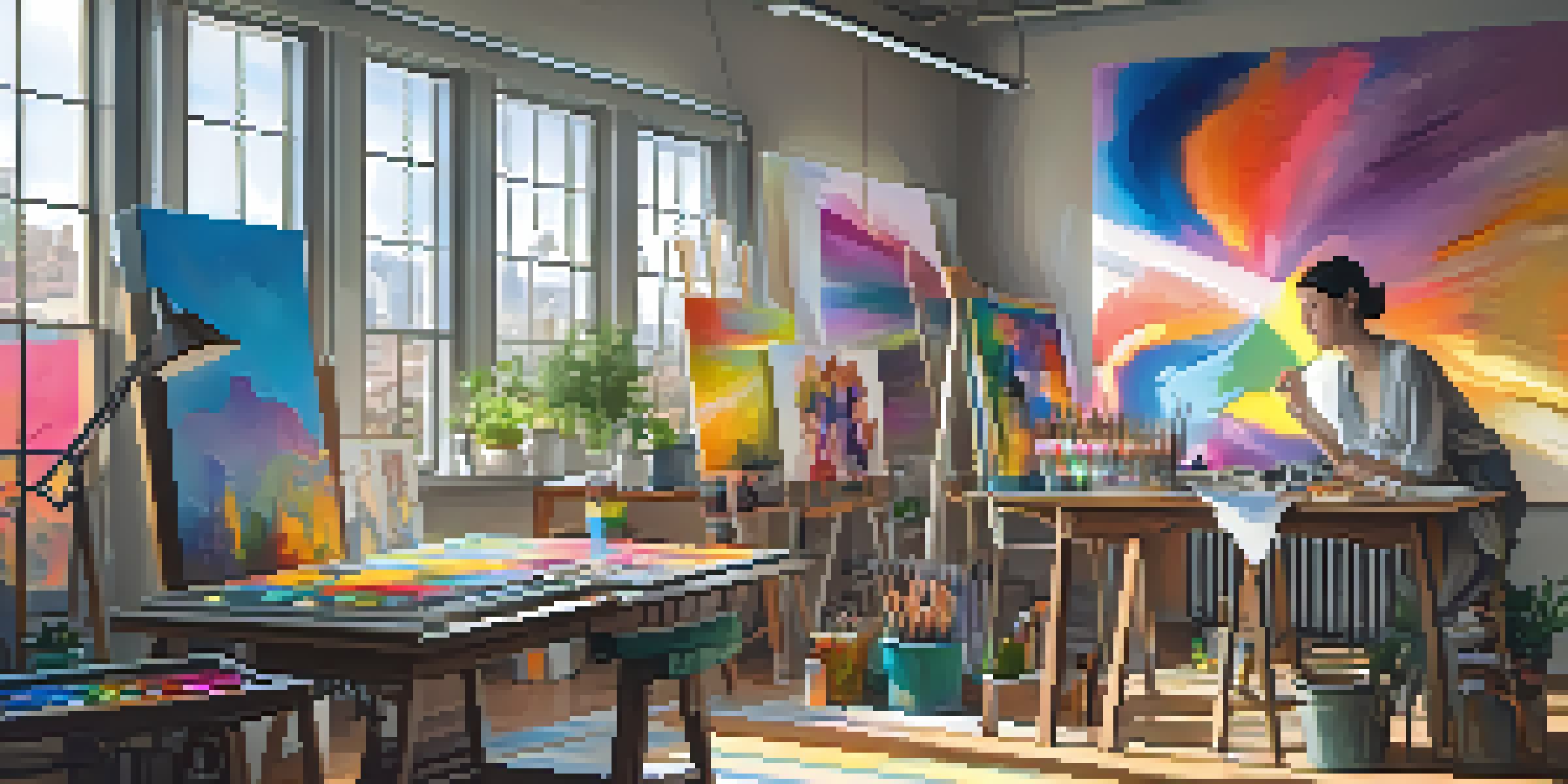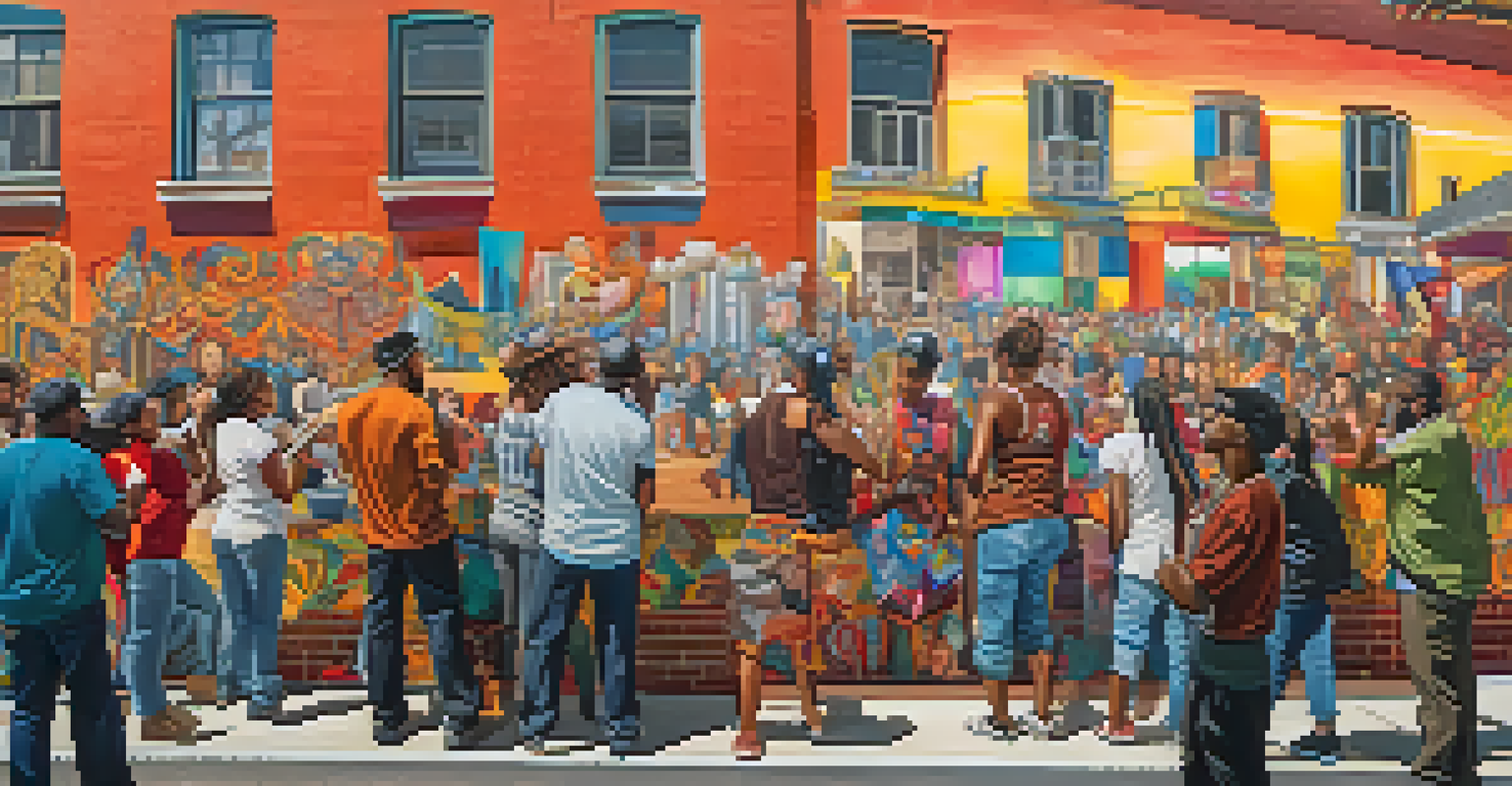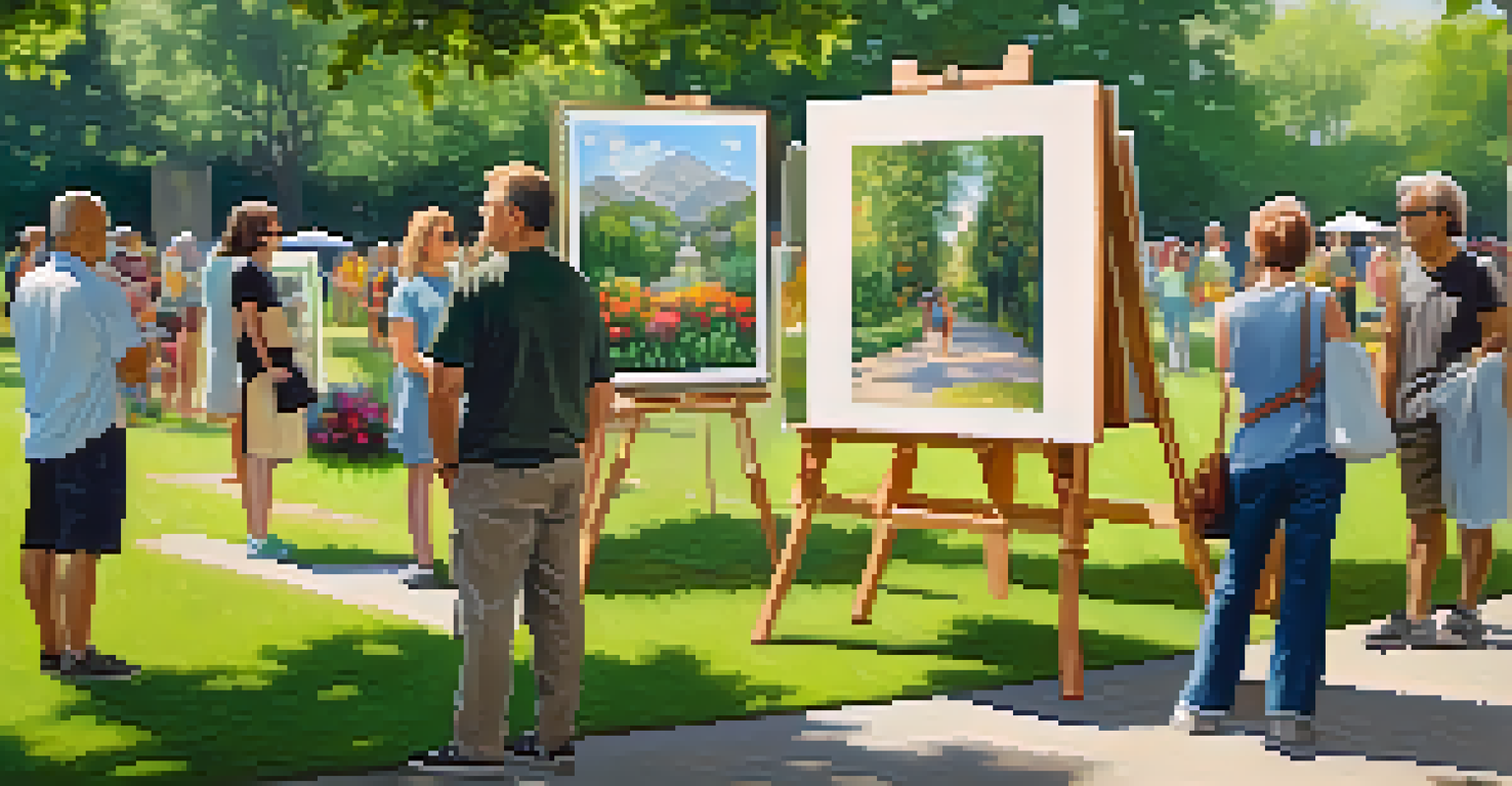The Influence of Social Media on Art and Representation

The Rise of Social Media in the Art World
Social media has transformed the landscape of the art world in unprecedented ways. Artists now have platforms like Instagram and TikTok to showcase their work to a global audience, bypassing traditional gatekeepers. This direct access allows for greater visibility and opportunities, particularly for emerging artists who may not have the same exposure in galleries.
Art is not freedom of expression. It's freedom of expression in chains.
For example, consider an artist who shares their creative process through Instagram Stories. This not only engages followers but also builds a community around their art, making it more relatable. The instant feedback from followers can also help artists refine their work, ensuring it resonates with their audience.
Ultimately, social media has democratized art, allowing diverse voices to emerge and thrive. In a world where anyone with a smartphone can become an artist, the possibilities for creativity and representation are endless.
Changing Narratives: Diverse Representation in Art
Social media platforms have become vital in amplifying diverse narratives within the art community. Historically marginalized groups now have the opportunity to share their stories and perspectives, contributing to a richer tapestry of representation. This shift encourages a broader understanding of culture and identity in art.

Take the rise of hashtags like #BlackArtMatters or #IndigenousArt as examples of how social media can foster community and visibility. These tags not only connect artists with similar backgrounds but also educate wider audiences about their experiences and histories. This collective storytelling promotes empathy and understanding, breaking down stereotypes.
Social Media Empowers Artists
Platforms like Instagram and TikTok allow artists to showcase their work directly to global audiences, bypassing traditional gatekeepers.
Moreover, this new representation challenges traditional art standards and practices, urging institutions to reevaluate their approaches. As a result, galleries and museums are now more inclined to feature diverse artists, reflecting the changing dynamics of society.
The Role of Influencers in Art Promotion
Influencers play a significant role in shaping art trends and promoting artists through social media. Their ability to reach large audiences makes them essential allies for artists looking to gain exposure. When an influencer shares a piece of art, it can lead to increased sales and interest in that artist's work.
The role of the artist is to make the revolution irresistible.
For instance, when a popular beauty influencer showcases a painting in their videos, it can introduce a whole new audience to that artist. This cross-pollination between different fields can create exciting collaborations and fresh artistic expressions. It’s a win-win situation where both the artist and influencer benefit from the partnership.
However, this influence comes with its challenges. Artists must navigate the fine line between authenticity and commercialism, ensuring their work remains true to their vision while appealing to the influencer's audience.
Art as a Tool for Social Commentary
Art has always been a vehicle for social commentary, and social media enhances this role significantly. Artists can quickly share pieces that respond to current events, sparking conversations and mobilizing communities. This immediacy allows art to act as a powerful catalyst for change.
Consider the muralists who create works that address social justice issues, sharing their art on platforms like Twitter and Instagram. Their pieces can go viral, reaching audiences far beyond their local communities. This kind of visibility can lead to public discourse, raising awareness and inspiring action.
Diverse Voices Amplified
Social media fosters the sharing of diverse narratives, enabling historically marginalized groups to contribute to the richness of artistic representation.
By utilizing social media, artists can create a dialogue around pressing issues, making their work relevant and impactful. This connection between art and activism fosters a sense of community and shared purpose among followers.
Changing Aesthetics: The Influence of Digital Art
Digital art has gained immense popularity through social media, reshaping traditional aesthetics. With tools like Procreate and Adobe Creative Suite, artists can create stunning visuals that captivate online audiences. This shift has led to a new appreciation for digital mediums as legitimate forms of artistic expression.
For example, the rise of NFTs (non-fungible tokens) has created a unique market for digital artists. Social media platforms have facilitated the sale and promotion of these digital assets, allowing artists to monetize their work in innovative ways. This not only empowers artists financially but also challenges conventional notions of ownership and art.
As digital art continues to thrive, it influences trends in design, illustration, and even traditional painting. The blending of physical and digital art forms creates exciting opportunities for collaboration and experimentation.
The Impact of Algorithms on Art Visibility
Algorithms play a crucial role in determining what art gets seen on social media. Each platform has its own set of rules that can either promote or obscure an artist's work. Understanding these algorithms can help artists navigate the digital landscape and ensure their art reaches the intended audience.
For instance, artists who post consistently and engage with their followers are more likely to have their work featured in feeds. This means that not only the quality of the art matters, but also the strategy behind sharing it. Artists must adapt to these changes to stay relevant in a fast-paced environment.
Algorithms Shape Art Visibility
Understanding social media algorithms is crucial for artists to enhance the visibility of their work and engage effectively with their audience.
However, this reliance on algorithms can also be a double-edged sword. Artists may feel pressured to conform to trends or engage in practices that don’t align with their creative vision, raising questions about authenticity in the digital age.
The Future of Art in the Social Media Era
Looking ahead, the influence of social media on art and representation is poised to grow even more significant. As technology evolves, artists will find new ways to express themselves and engage with their audiences. Virtual reality and augmented reality could become mainstream tools for artistic expression, further blurring the lines between the physical and digital worlds.
Moreover, as social media continues to democratize the art world, we can expect even greater diversity in representation. Artists from all backgrounds will have the opportunity to share their unique perspectives, enriching our collective understanding of art and culture.

Ultimately, the future of art in the social media era is bright, filled with possibilities for innovation and connection. As artists harness the power of these platforms, they will continue to inspire, challenge, and engage audiences worldwide.